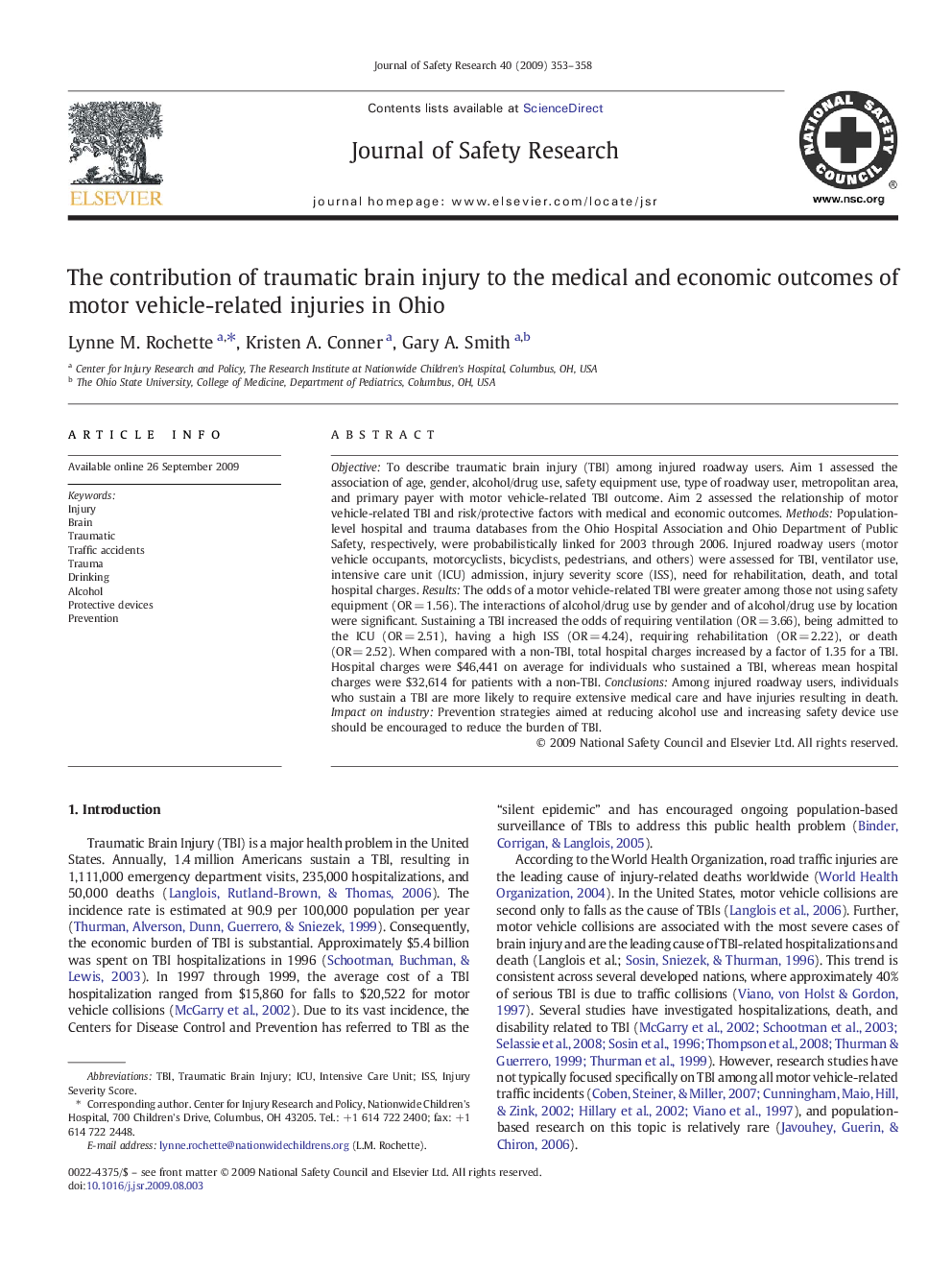| Article ID | Journal | Published Year | Pages | File Type |
|---|---|---|---|---|
| 587733 | Journal of Safety Research | 2009 | 6 Pages |
ObjectiveTo describe traumatic brain injury (TBI) among injured roadway users. Aim 1 assessed the association of age, gender, alcohol/drug use, safety equipment use, type of roadway user, metropolitan area, and primary payer with motor vehicle-related TBI outcome. Aim 2 assessed the relationship of motor vehicle-related TBI and risk/protective factors with medical and economic outcomes.MethodsPopulation-level hospital and trauma databases from the Ohio Hospital Association and Ohio Department of Public Safety, respectively, were probabilistically linked for 2003 through 2006. Injured roadway users (motor vehicle occupants, motorcyclists, bicyclists, pedestrians, and others) were assessed for TBI, ventilator use, intensive care unit (ICU) admission, injury severity score (ISS), need for rehabilitation, death, and total hospital charges.ResultsThe odds of a motor vehicle-related TBI were greater among those not using safety equipment (OR = 1.56). The interactions of alcohol/drug use by gender and of alcohol/drug use by location were significant. Sustaining a TBI increased the odds of requiring ventilation (OR = 3.66), being admitted to the ICU (OR = 2.51), having a high ISS (OR = 4.24), requiring rehabilitation (OR = 2.22), or death (OR = 2.52). When compared with a non-TBI, total hospital charges increased by a factor of 1.35 for a TBI. Hospital charges were $46,441 on average for individuals who sustained a TBI, whereas mean hospital charges were $32,614 for patients with a non-TBI.ConclusionsAmong injured roadway users, individuals who sustain a TBI are more likely to require extensive medical care and have injuries resulting in death.Impact on industryPrevention strategies aimed at reducing alcohol use and increasing safety device use should be encouraged to reduce the burden of TBI.
